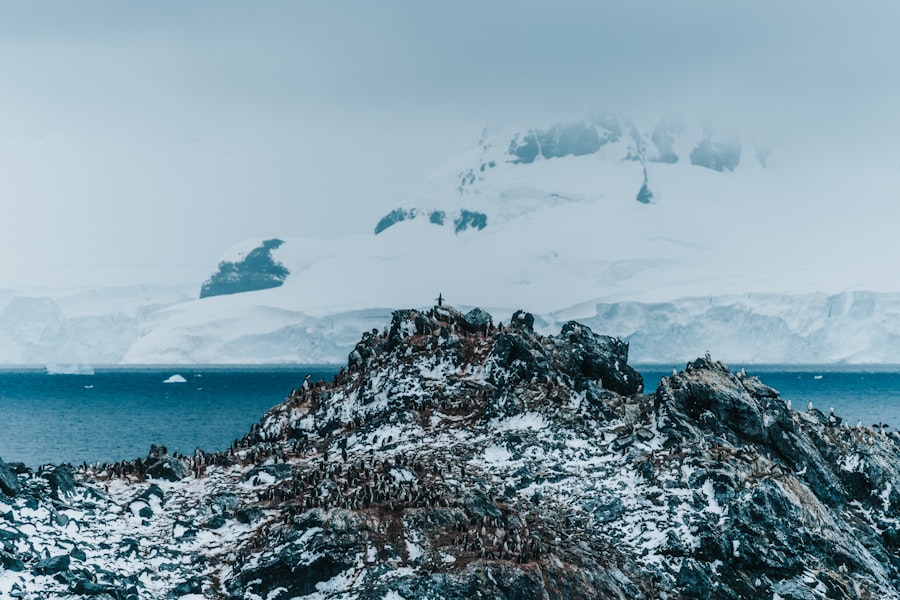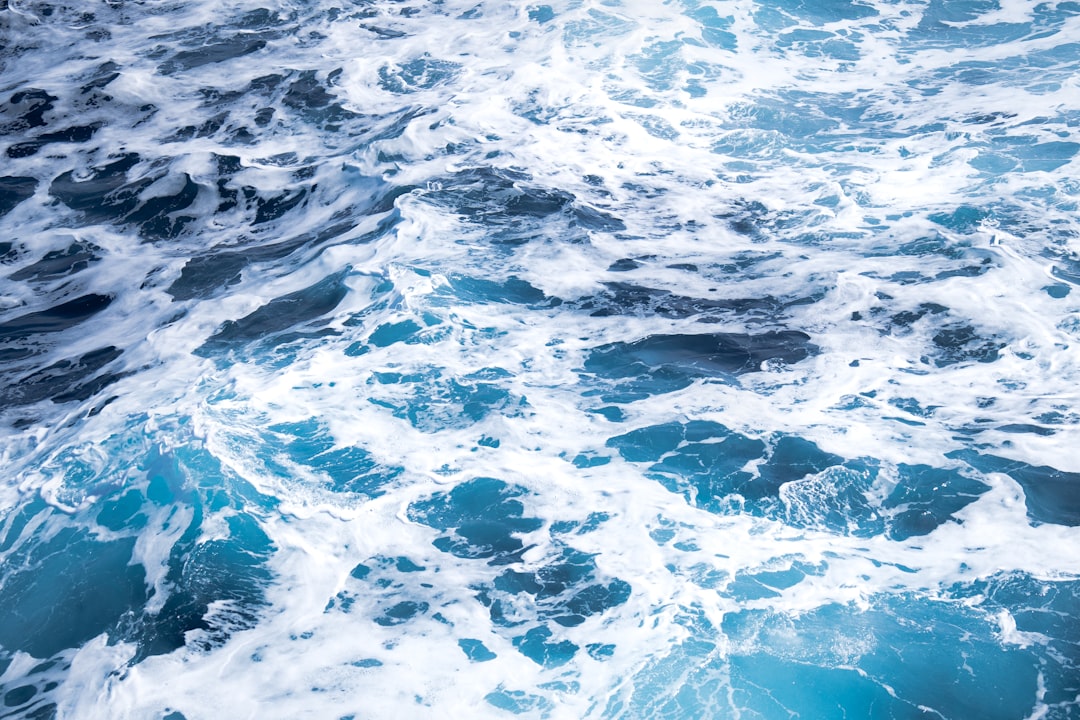The Drake Passage, a body of water situated between the southern tip of South America and Antarctica, is renowned for its tumultuous seas and unpredictable weather. Named after the English explorer Sir Francis Drake, who navigated these waters in the late 16th century, the passage serves as a critical maritime route for vessels traveling to and from Antarctica. Its unique geographical position not only makes it a vital link for scientific research and tourism but also a challenging environment for sailors and adventurers alike.
The passage is often characterized by its rough waters, strong currents, and the convergence of various oceanic systems, making it a subject of fascination for both mariners and researchers. The Drake Passage is more than just a stretch of ocean; it is a gateway to one of the most remote and pristine regions on Earth. The waters are teeming with marine life, and the surrounding landscapes are breathtakingly beautiful, drawing explorers, scientists, and tourists from around the globe.
However, the allure of the Drake Passage comes with inherent risks, as its unpredictable nature can turn a routine crossing into a formidable challenge. Understanding the complexities of this passage is essential for anyone considering a journey through its waters.
Key Takeaways
- The Drake Passage is a body of water between South America’s Cape Horn and the South Shetland Islands of Antarctica, known for its challenging sailing conditions.
- The Drake Passage is significant because it is the shortest route from the Atlantic to the Pacific and the only connection between the Southern Ocean and the rest of the world’s oceans.
- Weather patterns in the Drake Passage can be extreme, with strong winds, high waves, and rapidly changing conditions posing challenges to navigation.
- Navigational strategies for crossing the Drake Passage include choosing the right time of year, following established shipping lanes, and using modern technology for weather forecasting and route planning.
- Safety precautions and emergency protocols for the Drake Passage include having experienced crew, proper safety equipment, and emergency communication systems in place.
Understanding the geographic significance of the Drake Passage
Geographically, the Drake Passage plays a pivotal role in global ocean circulation. It connects the Atlantic and Pacific Oceans, allowing for the exchange of water masses that influence climate patterns across the globe. The passage is approximately 800 kilometers wide at its narrowest point, making it one of the most significant maritime corridors in the Southern Hemisphere.
The passage also serves as a natural barrier that separates South America from Antarctica, making it a crucial point for navigation and exploration. Its strategic location has made it a focal point for scientific research, particularly in studies related to climate change and oceanography.
The unique geographical features of the Drake Passage, including its deep-sea trenches and underwater ridges, contribute to its significance as a site for marine biodiversity and ecological research.
Weather patterns and challenges in the Drake Passage

The weather in the Drake Passage is notoriously unpredictable, characterized by rapidly changing conditions that can pose significant challenges for vessels attempting to cross. The region is influenced by strong winds, particularly the infamous “Roaring Forties,” which are powerful westerly winds that sweep across the Southern Ocean. These winds can generate large swells and rough seas, making navigation treacherous at times.
Mariners must be prepared for sudden shifts in weather, as conditions can change from calm to chaotic within minutes. In addition to wind and waves, fog and storms are common occurrences in the Drake Passage. The combination of cold Antarctic air and warmer ocean currents often leads to low visibility and challenging navigation conditions.
Sailors must be equipped with advanced weather forecasting tools and navigational equipment to safely traverse these waters. Understanding the weather patterns and potential hazards is crucial for ensuring a safe crossing through this formidable passage.
Navigational strategies for crossing the Drake Passage
| Strategy | Advantages | Disadvantages |
|---|---|---|
| Using ice-strengthened vessels | Increased safety and stability | Higher cost |
| Following established routes | Access to known safe passages | Potential for encountering icebergs |
| Utilizing experienced navigational crew | Expertise in navigating challenging conditions | Reliance on human skill and judgment |
Successfully navigating the Drake Passage requires careful planning and strategic decision-making. Experienced mariners often emphasize the importance of timing when attempting to cross this challenging body of water. Many choose to embark on their journey during the summer months when weather conditions are generally more favorable.
However, even during this period, sailors must remain vigilant and adaptable to changing conditions. Utilizing modern technology can significantly enhance navigational safety in the Drake Passage. Advanced GPS systems, radar, and satellite communications allow sailors to monitor weather patterns in real-time and make informed decisions about their route.
Additionally, understanding local currents and tides is essential for optimizing travel time and minimizing exposure to rough seas. Mariners often rely on detailed charts and local knowledge to navigate safely through this unpredictable environment.
Safety precautions and emergency protocols for the Drake Passage
Safety is paramount when crossing the Drake Passage, given its reputation for rough seas and unpredictable weather. Mariners are advised to conduct thorough safety briefings before embarking on their journey, ensuring that all crew members are familiar with emergency protocols and procedures. Life jackets, flares, and other safety equipment should be readily accessible, and vessels must be equipped with reliable communication devices to maintain contact with shore-based support.
In addition to standard safety measures, having a well-prepared emergency plan is crucial for navigating the Drake Passage. This includes identifying safe havens along the route where vessels can seek refuge in case of severe weather or mechanical failure. Crew training in emergency response scenarios can also enhance safety during the crossing.
By prioritizing safety precautions and being prepared for emergencies, sailors can mitigate risks associated with traversing this challenging maritime corridor.
Wildlife encounters in the Drake Passage

The Drake Passage is not only known for its challenging conditions but also for its rich biodiversity. The waters are home to an array of marine life, including whales, seals, and various species of seabirds. Sailors crossing the passage often have the opportunity to witness these magnificent creatures in their natural habitat.
Humpback whales, orcas, and minke whales are commonly spotted during crossings, delighting passengers and crew alike. Birdwatching is another popular activity in the Drake Passage, as numerous seabird species thrive in this region. Albatrosses, petrels, and skuas are frequently seen soaring above the waves or diving into the water in search of food.
These wildlife encounters not only enhance the experience of crossing the passage but also serve as a reminder of the ecological significance of this unique marine environment.
Historical significance of the Drake Passage
The historical significance of the Drake Passage cannot be overstated. It has long been a route for explorers seeking to uncover the mysteries of Antarctica and beyond. Sir Francis Drake’s expedition in 1578 marked one of the first recorded crossings of this treacherous waterway, paving the way for future explorers such as James Cook in the 18th century.
These early voyages contributed to our understanding of geography and navigation while also igniting interest in Antarctic exploration. Throughout history, the Drake Passage has been a site of both adventure and tragedy. Many ships have met their fate in these turbulent waters due to storms or navigational errors.
The stories of these maritime endeavors have become part of maritime lore, highlighting both human resilience and vulnerability in the face of nature’s power. Today, as modern vessels traverse these waters with advanced technology, they continue to honor the legacy of those who dared to explore this formidable passage.
Tips for preparing for a journey through the Drake Passage
Preparing for a journey through the Drake Passage requires careful consideration and planning. Travelers should begin by researching their options thoroughly, whether they are embarking on a cruise or sailing on a private vessel. Understanding what to expect in terms of weather conditions, wildlife encounters, and potential challenges will help set realistic expectations for the journey ahead.
Packing appropriately is also essential for a successful crossing. Layered clothing is recommended due to fluctuating temperatures, along with waterproof gear to protect against splashes from waves or rain. Additionally, travelers should bring essential items such as seasickness medication, binoculars for wildlife watching, and cameras to capture stunning views of this remarkable region.
By being well-prepared, adventurers can fully enjoy their experience while navigating through one of Earth’s most captivating maritime passages.
Popular routes and destinations in the Drake Passage
Several popular routes traverse the Drake Passage, each offering unique experiences for travelers seeking adventure or scientific exploration. One common route is from Ushuaia, Argentina—the southernmost city in the world—directly to various destinations in Antarctica such as Deception Island or King George Island. This route allows travelers to witness breathtaking landscapes while providing opportunities for wildlife encounters along the way.
Another popular option includes cruises that explore both sides of the passage, offering stops at various islands and research stations along Antarctica’s coastline. These itineraries often include guided excursions such as kayaking or hiking on ice-covered terrain, allowing travelers to immerse themselves in this pristine environment fully. Regardless of the chosen route, each journey through the Drake Passage promises unforgettable experiences amid stunning natural beauty.
The future of navigating the Drake Passage
As climate change continues to impact global weather patterns and ocean conditions, navigating the Drake Passage may evolve significantly in coming years. Researchers are closely monitoring changes in sea ice extent and ocean temperatures that could affect shipping routes and wildlife migration patterns within this region. The potential opening up of new shipping lanes due to melting ice could lead to increased maritime traffic through these waters.
Moreover, advancements in technology may enhance safety measures for vessels crossing the passage. Innovations such as autonomous ships equipped with sophisticated navigation systems could revolutionize how mariners approach this challenging environment. However, increased traffic also raises concerns about environmental impacts on delicate ecosystems within the passage.
Balancing exploration with conservation will be crucial as humanity continues to navigate this remarkable yet unpredictable maritime corridor.
Personal accounts and experiences of crossing the Drake Passage
Personal accounts from those who have crossed the Drake Passage often highlight both its beauty and challenges. Many travelers recount moments of awe as they witnessed whales breaching or albatrosses gliding gracefully overhead against dramatic backdrops of icy landscapes. However, these experiences are often accompanied by tales of rough seas that tested their resolve—some describing moments when waves crashed over their vessels or when they struggled against seasickness.
The camaraderie among crew members or fellow travelers often becomes a cherished memory as they bond over shared experiences during turbulent crossings or moments spent marveling at nature’s wonders together. Ultimately, personal stories from those who have traversed the Drake Passage serve as testaments to its allure—a place where adventure meets unpredictability amid breathtaking beauty.
The Drake Passage is renowned for being one of the most treacherous and challenging sea routes in the world, connecting the Atlantic and Pacific Oceans between the southern tip of South America and Antarctica. This narrow body of water is infamous for its unpredictable weather conditions and strong currents, making it a formidable passage for sailors and explorers. For those interested in learning more about the geographical significance and the challenges posed by the Drake Passage, a related article can be found on MyGeoQuest, which provides insights into the natural wonders and navigational challenges of this iconic maritime route.
WATCH NOW! Drake Passage: Earth’s Deadliest Waters Revealed
FAQs
What is Drake Passage known for?
Drake Passage is known for being a treacherous body of water located between the southern tip of South America and the northern tip of the Antarctic Peninsula. It is known for its rough seas, strong winds, and challenging sailing conditions.
Why is Drake Passage considered treacherous?
Drake Passage is considered treacherous due to its unpredictable weather patterns, strong winds, and rough seas. The convergence of the Atlantic, Pacific, and Southern oceans also contributes to the challenging sailing conditions in the area.
What makes Drake Passage significant?
Drake Passage is significant because it serves as the primary connection between the Atlantic and Pacific oceans. It also marks the boundary between South America and Antarctica, making it a crucial route for scientific research expeditions and wildlife migrations.
What wildlife can be found in Drake Passage?
Drake Passage is home to a diverse range of wildlife, including various species of seabirds, whales, seals, and penguins. The nutrient-rich waters of the passage support a thriving ecosystem, making it a popular destination for wildlife enthusiasts and researchers.
Are there any historical events associated with Drake Passage?
Drake Passage is named after the famous English explorer Sir Francis Drake, who is believed to have been the first European to navigate the treacherous waters in the late 16th century. The passage has since been a significant route for exploration and trade, with a rich history of maritime expeditions and scientific discoveries.
